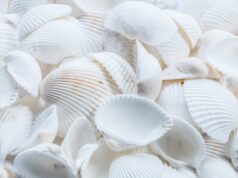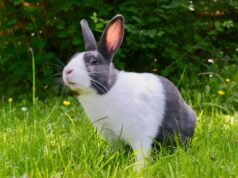In the 1960s, Penn biologist Dan Janzen, as part of earning his Ph.D., re-described what has become a classic example of biological mutualism: the obligate relationship between acacia-ants and ant-acacia trees. The acacia trees produce specialized structures to shelter and feed the ant colony, and the ants, in turn, defend the tree against herbivores.
In a new study in Proceedings of the National Academy of Sciences, colleagues of Janzen’s in the Penn Biology Department uncover a genetic mechanism that programs the plant side of the ant-acacia relationship. Scott Poethig, a plant biologist, and Aaron Leichty, who earned his Ph.D. working under Poethig and is now a postdoctoral researcher at the University of California, Davis, showed that these species of acacia develop the traits necessary to feed the ant colony—hollow swollen thorns to house them, and nectaries and nutrient-rich leaflet tips called Beltian bodies to feed them—as part of an age-dependent phenomenon in plant development.
“There is a cost associated with making these traits,” says Poethig, senior author on the report, “but the plant needs them, otherwise it’s a goner. Dan showed: no ants, no plants. The plant is eaten by everything from grasshoppers to mice.
“So there’s a tradeoff happening. And what we found is that these traits seem to have evolved on the back of a preexisting pathway that governs a developmental transition in plants.”
Adds Leichty: “When we dug into the literature, we found that a lot of plant defense strategies are age-dependent. It’s counterintuitive because you think the young plants would want to start making these structures right away so they wouldn’t get eaten, but our findings as well as profound logic suggest there are biological constraints on making them.”
Find your dream job in the space industry. Check our Space Job Board »
Poethig has spent a large part of his career studying this transition, what some regard as a plant’s “adolescence.” But he hadn’t considered it in the context of the ant-acacia relationship until his son took Janzen’s Humans and the Environment course at Penn and learned about the textbook example of mutualism.
“I thought, Wouldn’t it be interesting if this suite of traits was controlled by the developmental pathway I’ve been studying for the last 30 years?” he recalls.
One clue suggested it might: In Janzen’s observations from the field, he had noted that the plants do not make these features right away, suggesting they may need to reach a more mature stage to do so.
To get his hands on some seeds to begin probing this question with molecular tools, Poethig asked Janzen to procure some but also did what any 21st century biologist would: He looked online.
“I landed on an Etsy site called Mr. Nature that sells seeds of Vachellia cornigera,” a species of acacia native to Mexico and Central American, says Poethig.
The delivery arrived weeks later with not only the seeds but also an acacia pod and some thorns “and a little sign that said, ‘Ouch! Very sharp!'” Poethig says. Those plant parts enabled Janzen to later confirm the species identification from an otherwise questionable source.
Poethig gathered other seeds from a seller in Belize and, finally, from Janzen himself.
“When I went over to pick up the seeds from Dan, his biologist wife Winnie was there and said, ‘Dan, maybe you should tell Scott where you got the seeds,'” Poethig recalls. Janzen went on to explain that he had seen a monkey eating the acacia pods in their front yard in Costa Rica. Janzen then collected the seeds from the monkey’s scat, dropped while he was eating yet more. The next month he discovered the tree lacked its usual ant colony, so the monkey had easy pickings.
With the seeds in hand, Leichty began to develop strategies to grow and study them in the lab. Once he had the plants growing reliably, he observed what Janzen had seen in the wild a half-century before.
“Sure enough, the traits appear but not right away,” Leichty says.
Looking at the three different acacias they had on hand—Vachellia collinisii from Belize, V. collinsii from Costa Rica, and V. cornigera from Florida—Leichty and Poethig found that, while the precise timing differed depending on the species, the plants’ extrafloral nectaries, which are made by all acacia species, appeared first. Swollen thorns developed next, and the Beltian bodies appeared last.
The researchers then turned attention to the possible programs for these traits. They obtained the first genome sequence of a Vachellia species and looked specifically at certain microRNAs—short, non-coding sections of the genome—miR156 and miR157, which they had previously found to be associated with controlling the developmental timing of traits in other plant species.
As the swollen thorn and other ant-attracting traits began to appear in the acacia, levels of miR156 and miR157 declined, and the levels of different protein transcription factors repressed by these microRNAs increased.
For the next step in their research, Poethig and Leichty considered another observation that Janzen had made in the field; acacia trees growing in the shade developed these specialized traits more slowly. In the lab, they again found a connection to miR156 and miR157. Plants grown in low-light conditions had much higher levels of the microRNAs and a later appearance of the swollen thorn traits compared to their counterparts grown in full-light.
“The shade experiments led to the delay of this whole pathway,” Leichty says, “and offered a simple way to experimentally perturb the timing of these traits while also controlling for the developmental age of our samples.”
To get a sense of how the regulation of these traits may have arisen evolutionarily, the researchers explored other acacia species that do not make Beltian bodies or swollen thorns but do make nectaries on their leaves. In these species, as in the ant-acacias, miR156’s decline coincided with the appearance of the nectaries. The similarity among the acacias in this regard suggests that the existing pathway was coopted to regulate the other traits that are required for a healthy bodyguard—swollen thorns and good food—the researchers say.
To Janzen, the find is supportive of his field discoveries, making a case for the blending of field and lab investigations.
“Looking from the outside, as ecologists are wont to do,” he says, he discerned from his observations from the 1960s in Veracruz, Mexico that the youngest ant-acacia plants “switch on their defenses against herbivores” only when they appeared to have garnered enough resources.
“Scott and Aaron peered at the same event from the inside, at all that DNA stuff I cannot see,” adds Janzen. “I have to take their word for its existence. They have to take my word for the herbivory and the protective ant colony. ‘Tis the difference between whole-organism biologists and molecular biologists. I watched and asked why. They watched and asked how.”
Provided by: University of Pennsylvania
More information: Aaron R. Leichty et al. Development and evolution of age-dependent defenses in ant-acacias. Proceedings of the National Academy of Sciences (2019). DOI: 10.1073/pnas.1900644116
Image: A founding queen acacia-ant (Pseudomyrmex ferruginea) cuts her first entrance hole into the swollen thorn (Vachellia cornigera) in which she will start her colony, the first thorn made by this young seedling ant-acacia in Veracruz, Mexico, 1962. Scientists from Penn have made new insights into the genetic drivers of this mutualistic relationship.
Credit: D. H. Janzen











